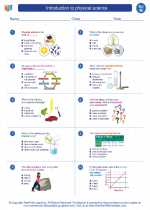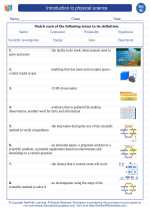Transverse Waves
Transverse waves are a type of wave in which the particles of the medium move perpendicular to the direction of the wave. This means that the disturbance created by the wave causes the particles of the medium to move up and down or side to side, rather than back and forth in the same direction as the wave.
Characteristics of Transverse Waves
Transverse waves have the following characteristics:
- Perpendicular Motion: The motion of the particles in a transverse wave is perpendicular to the direction of the wave.
- Crests and Troughs: Transverse waves have crests (the highest points of the wave) and troughs (the lowest points of the wave).
- Examples: Examples of transverse waves include light waves, water waves, and electromagnetic waves.
Study Guide
Here are some key points to remember about transverse waves:
- Define transverse waves and explain how the motion of particles in a transverse wave differs from the direction of the wave.
- Identify the characteristics of transverse waves, including crests and troughs.
- Give examples of transverse waves in everyday life and explain how they demonstrate the characteristics of transverse waves.
Use the study guide to review and test your understanding of transverse waves. You can also explore additional resources and examples to deepen your knowledge of this topic.
Good luck with your studies!





